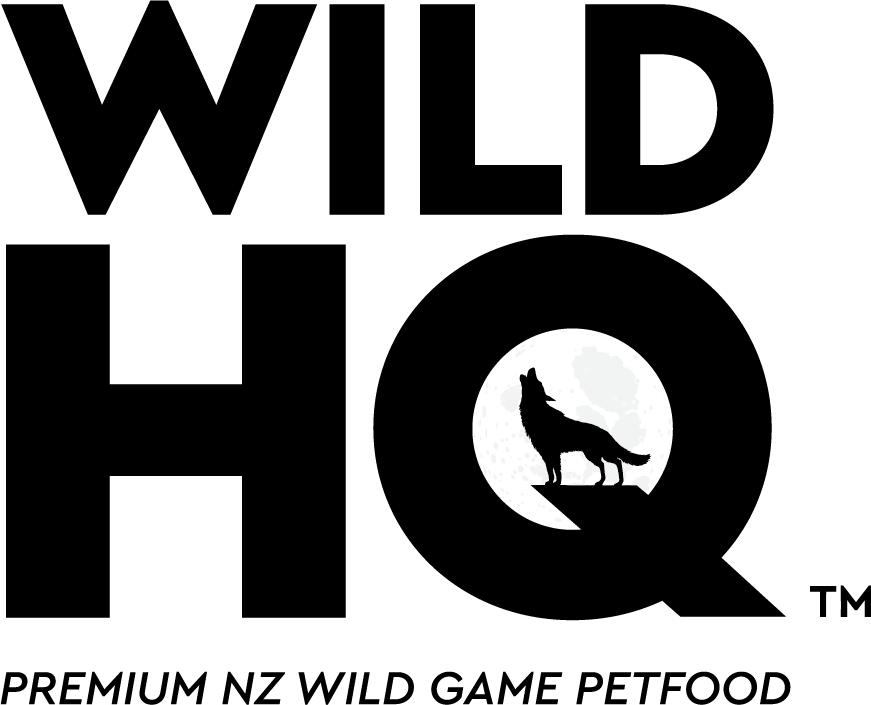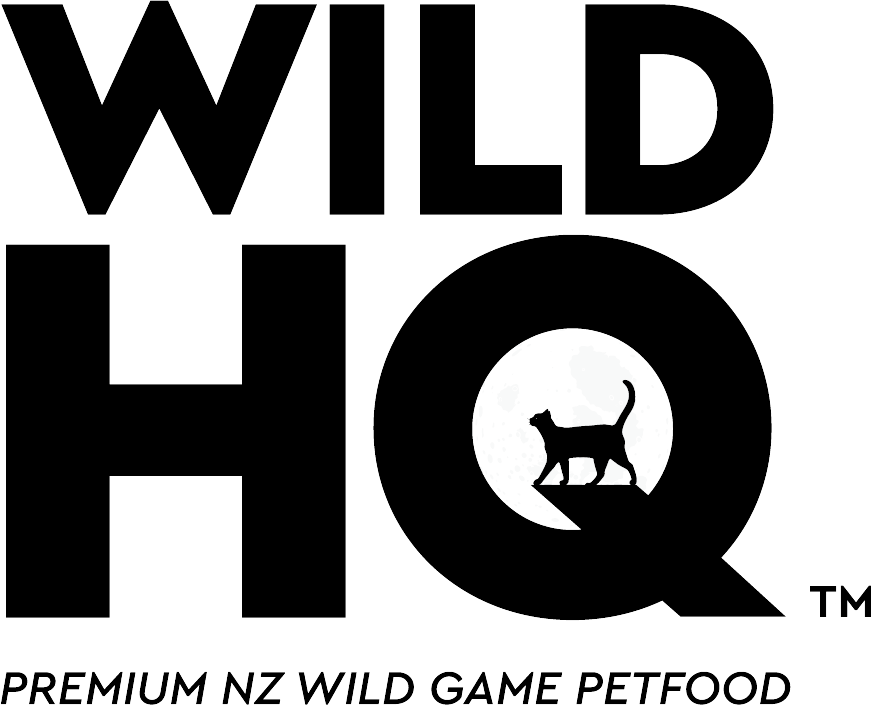Every Pet Is Different
Every cat and dog needs a different amount of food dependent on its’ breed, age, condition and how active it is.
So our feeding guide can only be a 'guide' only. This feeding guide is your best reference for feeding your pet food as the feeding guides on packaging may have been outdated due to our latest testing. Our feeding guide is set at the bottom end of the scale, so make your assessment based on that.
It's best practice to consult with your vet, to know what your pets' ideal weight should be based on its breed, age, weight, condition and activity level. Then feed it according to that goal. If it's losing weight – feed it more and if it's gaining weight – feed it less. But remember that ideally your pet only needs to be feeding our meals - because each recipe is AAFCO Approved as 'Complete and Balanced'.
Transition to Raw Food
If you are introducing your pet to raw food for the first time when it has been on a non-raw diet it is best to introduce your pet to WildHQ slowly.
A sudden change in diet can be difficult for the pet to accept/digest. Too quick an introduction can cause your pet to have issues with diarrhoea or vomiting. So it is best to introduce the new diet slowly over a week.
A slow transition. Calculate how much WildHQ food your pet should have, based on their ideal weight, and using our guides below. On the first day, feed 1/7 of that amount of WildHQ - plus 6/7 of its existing food. On the second day, feed 2/7 WildHQ and 5/7 existing food and so on until after a week your pet is just on WildHQ food. Always remember to supply enough fresh drinking water too!
If your pet is already on raw food you can try a quicker changeover period – or even straight away.
You can use the medallions or the mince as a ‘topper’ or a treat food if you wish. That’s a good way to introduce them to the 'taste of wild'.
You can still feed a mixed diet – but we wouldn’t recommend that. Our meals are tested and approved to AAFCO standards as 'Complete & Balanced' meals so that is all the nutrition your pet needs!.
In time, we intend to introduce more variety for your pets diet, with other 'whole-prey' recipes including choices of; Wild Goat, Wild Tahr and Wild NZ Wallaby.
If you would like to be informed of the release of new products sign up for our newsletter on our website.You'll get 15% off your next order!
Feeding Guide for Dogs
Dog Food - Wild Venison Mince
Our mince dog food is sold frozen in 450g and 900g pottles. It is best to keep it frozen and thaw it slowly when needed. The food will keep well for 7 days refrigerated. It may grey slightly over time but just give it a stir. It will not be smelly like some other dog foods.
Feeding Guide - Wild Venison Mince
This meal is an AAFCO Approved Maintenance Diet for an Adult Dog.
Feed your dog these amounts twice a day.
Note: As all dogs are different adjust the quantity fed based on your dog's body condition as required - in consultation with your vet.
| DOG WEIGHT (kg) | MINCE (g) |
|---|---|
| ≤5 | 135 |
| 10 | 245 |
| 15 | 330 |
| 20 | 410 |
| 30 | 560 |
| ≥40 | 695 |
Dog Food - Wild Venison Medallions
Our dog food medallions are sold frozen in 1Kg resealable pouches. (Note: Apologies if you have to cut the tear tab). It is best to keep the medallions frozen for longevity as our 'Use By' date is for one year when frozen. Each bone shaped medallions is approximately 57g. There should be between 17-19 medallions in a bag.
We recommend taking out your daily feed each night and thawing it in the fridge. Feed half the daily amount in the morning and the other half at night. Then take out the next days feed to thaw. But some pets dont even mind them frozen!
Our medallions don’t smell bad at all but you can keep them covered if you wish. Some blood may seep out of the medallions when thawing. Your pooch wont mind having this dribbled over their medallions at all! You may like to mash up the medallions but they are fine just as one piece or part thereof.
TIP: For fussy eaters it can be a good idea to quickly sear the outside of the medallions. Use a small amount of sunflower or canola oil – but don't cook them through.
Feeding Guide - Wild Venison Medallions
This meal is an AAFCO Approved Maintenance Diet for an Adult Dog.
Feed your dog these amounts twice a day.
| DOG WEIGHT (kg) | MEDALLIONS |
|---|---|
| ≤5 | 2 |
| 10 | 4 |
| 15 | 5.5 |
| 20 | 7 |
| 30 | 9 |
| ≥40 | 11.5 |
Feeding Guide for Puppies - Wild Venison Medallions
This Approved Puppy Diet is formulated to meet AAFCO nutritional levels established for the healthy development and growth of puppies.
To find the recommended amount of medallions to feed your puppy download this table. Select the correct row in the table by choosing the weight your puppy is now – and then select the correct column – which is what your puppy's fully grown weight will be. The intersecting square will show the amount of medallions to feed. As your puppy grows adjust the amount of feed by referring back to this table. Consult your vet on what the ideal fully grown weight of your dog should be.
Feeding Guide for Pregnant and Lactating Bitches - Wild Venison Medallions
This Approved Puppy Diet has also been formulated to meet AAFCO nutritional levels established for Pregnant Bitches and Lactating Bitches for their health and the healthy development and growth of their puppies - during gestation and before weaning.
The Pregnant Bitches Feeding Guide Table can be seen below. This table shows the daily requirements for bitches late in gestation (from 4 weeks after mating until giving birth). We recommend feeding this amount 3 times a day.
| MOTHER'S WEIGHT (kg) |
MEDALLIONS REQUIRED |
|---|---|
| ≤5 | 2 |
| 7.5 | 3 |
| 10 | 4 |
| 12.5 | 4.5 |
| 15 | 5.5 |
| 17.5 | 6 |
| 20 | 6.5 |
| 22.5 | 7.5 |
| 25 | 8 |
| 27.5 | 9 |
| 30 | 9.5 |
| 32.5 | 10 |
| 35 | 10.5 |
| 37.5 | 11.5 |
| ≥40 | 12 |
NOTE Due to the amount of food required, we recommend that you consider our 5kg or 15kg Puppy Bundles for a better deal.
The Lactating Bitches Feeding Guide can be found by downloading this table. The table shows the weight (in KG) of your dog in rows and the number of expected puppies and the weeks. On the left hand side of the table select the weight your mother is now – and then select the column with the number of pups she is carrying. The intersecting square will show the amount of medallions to feed. We recommend you feed this amount three (3) times per day.
NOTE Due to the amount of food required, we recommend that you consider our 5kg or 15kg Puppy Bundles for a better deal.
Dog Food - Wild Goat Medallions
Our Wild Goat Medallions are sold frozen in 1kg vacuum packed bags. Each bone shaped medallions is approximately 57g and there should be between 17-19 medallions in a bag.
We recommend taking out your daily feed each night and thawing it in the fridge. Feed half the daily amount in the morning and the other half at night. Then take out the next days feed to thaw.
Our medallions don’t smell bad at all but you can keep them covered if you wish. Some blood may seep out of the medallions when thawing. Your pooch wont mind having this dribbled over their medallions at all! You may prefer to mash up the medallions.
Our 'Use By' date is for one year when kept frozen. If you thaw the medallions they will last for a week if refrigerated.
TIP#1: For fussy eaters it can be a good idea to quickly sear the outside of the medallions. Use a small amount of sunflower or canola oil – but don't cook them through.
TIP#2: Some pets dont mind these served frozen - especially in summer time like an ice block to cool them down. If you have a 'fast eater' serving them frozen can slow them down!
Feeding Guide - Wild Goat Medallions
This meal is an AAFCO Approved Maintenance Diet for an Adult Dog.
Feed your dog these amounts twice a day.
| DOG WEIGHT (kg) | MEDALLIONS |
|---|---|
| ≤5 | 2 |
| 10 | 3.5 |
| 15 | 4.5 |
| 20 | 5.5 |
| 30 | 8 |
| ≥40 | 9.5 |
Puppy Feeding Guide - Wild Goat Medallions
This Approved Puppy Diet is formulated to meet AAFCO nutritional levels established for the healthy development and growth of puppies.
To find the recommended amount of medallions to feed your puppy download this table. Select the correct row in the table by choosing the weight your puppy is now – and then select the correct column – which is what your puppy's fully grown weight will be. The intersecting square will show the amount of medallions to feed. As your puppy grows adjust the amount of feed by referring back to this table. Consult your vet on what the ideal fully grown weight of your dog should be.
Feeding Guide for Pregnant and Lactating Bitches - Wild Goat Medallions
This Approved Puppy Diet has also been formulated to meet AAFCO nutritional levels established for Pregnant Bitches and Lactating Bitches for their health and the healthy development and growth of their puppies - during gestation and before weaning.
The Pregnant Bitches Feeding Guide Table can be seen below. This table shows the daily requirements for bitches late in gestation (from 4 weeks after mating until giving birth).
We recommend feeding this amount 3 times a day.
| MOTHER'S WEIGHT (kg) | MEDALLIONS REQUIRED 3 TIMES A DAY |
|---|---|
| ≤5 | 1.5 |
| 7.5 | 2.25 |
| 10 | 2.75 |
| 12.5 | 3.25 |
| 15 | 4 |
| 17.5 | 4.5 |
| 20 | 5 |
| 22.5 | 5.5 |
| 25 | 6 |
| 27.5 | 6.5 |
| 30 | 7 |
| 32.5 | 7.5 |
| 35 | 7.75 |
| 37.5 | 8.25 |
| ≥40 | 8.75 |
NOTE Due to the amount of food required, we recommend that you consider our 5kg or 15kg Puppy Bundles for a better deal.
The Lactating Bitches Feeding Guide can be found by downloading this table. The table shows the weight (in kg) of your dog in rows and the number of expected puppies and the weeks. On the left hand side of the table select the weight your mother is now – and then select the column with the number of pups she is carrying. The intersecting square will show the amount of medallions to feed. We recommend you feed this amount three (3) times per day.
NOTE Due to the amount of food required, we recommend that you consider our 5kg or 15kg Puppy Bundles for a better deal.
Dog Treats and Chews
Feeding advice
WildHQ Treats and Chews are air-dried very slowly at a controlled temperature that will not alter the molecular structure of the protein and still capture all the tasty nutrients and flavours inside it.
The treats and chews are whole protein products - we do not mix our proteins. There are no additives or preservatives added to our treats or chews.
These treats and chews are a treat food only. They are not a complete and balanced meal (refer to https://www.wildhq.nz/collections/meals for these).
Please always supervise your pet when feeding treats and chews. Some dogs are 'inhalers' and like many of us don't chew their food enough - so there is always a risk that large pieces of bone, cartilage etc could cause airway or intestinal blockages. If you're in doubt that your pooch will digest the treat or chew safely - don't give it.
Because these are a dehydrated product always provide lots of fresh water for your pet to rehydrate.
Our Wild Venison Liver Treats are an excellent way to introduce new dogs and puppies to the taste of raw wild game. These are an excellent product for dog/puppy training because they break up easily into nice little bits (so you don't go through so much!) to reward them with.
Storage Tip; It is best to keep your air-dried treats and chews in a cool and dry room -preferably in an air-tight container. Too much exposure to sunlight or moisture may cause them to grow mould.
Chews for puppies
Antler is generally too hard a chew for young puppies baby teeth - so avoid those until they are adults. Good chews for puppies are the Golden Sinew (it's like doggy bubble gum - really chewy - but without the bone). Tongue, brisket, brisket wings, neck chops and half-hooves are also good for puppies - dependent on the breed.
Feeding Guide for Cats
Cat Food - Wild Venison Mince
Our mince cat food is sold frozen. It is best to keep it frozen and thaw it slowly (see Feeding Tip below). The food will keep well for 7 days once refrigerated. It may grey slightly over time but just give it a stir to refresh it. It will not be smelly like other cat foods.
Our cat (and kitten) food has taurine included in the recipe as an essential amino acid. It is exclusively found in animal-based proteins. It is critical for normal vision, digestion, heart muscle function, to maintain normal pregnancy and fetal development, and to maintain a healthy immune system.
Cat Feeding Guide
This meal is an AAFCO Approved Maintenance Diet for an Adult Cat.
Feed your cat these amounts twice a day.
| CAT WEIGHT (kg) | MINCE (g) |
|---|---|
| ≤2 | 56 |
| 3 | 74 |
| 4 | 90 |
| 5 | 104 |
| 6 | 118 |
| ≥7 | 131 |
Cat Food – Feeding Tip
Cats are notoriously fussy eaters right. So here’s a tip to help you entice your cat into liking its food. Humans have 9,000 taste buds compared to a cats’ 473! Cats make up for this taste deficiency with a superior sense of smell. Their most powerful response to food is through smell, not taste.
So, our frozen cat mince needs to be ‘slowly’ defrosted to release all the tasty wild smells your cat will love. (We dont recommend microwaving it). Its best to keep the mince frozen until you need the feed portion. If you defrost all of the pottle the smell quality will deteriorate over the 7 ‘use by’ days.
Tip: To defrost the mince slowly spoon the feed portion of mince required into a plastic container or bag - and immerse that into some hot water until it's thawed to room temperature. Then serve the mince into your cats bowl. Your cat will then be able to smell it from up to 50 metres away!
Kitten Food
Kitten Food - Wild Venison Mince
WildHQ Kitten Food is tested to exceed AAFCO petfood standards. Our kitten food has the essential prebiotics, probiotics and DHA required for the development of their digestive system, gut health bacterial balance, brain development, nervous system and vision.
Our kitten cat food is sold frozen. It is best to keep it frozen and thaw it slowly (see Feeding Tip below). The food will keep well for 7 days once refrigerated. It may grey slightly over time but just give it a stir to refresh it. It will not be smelly like other kitten foods.
Kitten Feeding Guide
This meal is an AAFCO Approved Maintenance Diet for a post-weaning kitten.
Feed your kitten these amounts twice a day.
| KITTEN WEIGHT (kg) | MINCE (g) |
|---|---|
| ≤1 | 73 |
| 1.5 | 90 |
| 2 | 102 |
| 2.5 | 110 |
| 3 | 117 |
| ≥3.5 | 120 |
Note: All values are for feeding AFTER weaning.
Special advice
If you have any concerns or need specific advice please give one of our team a call on 0800 945 347






